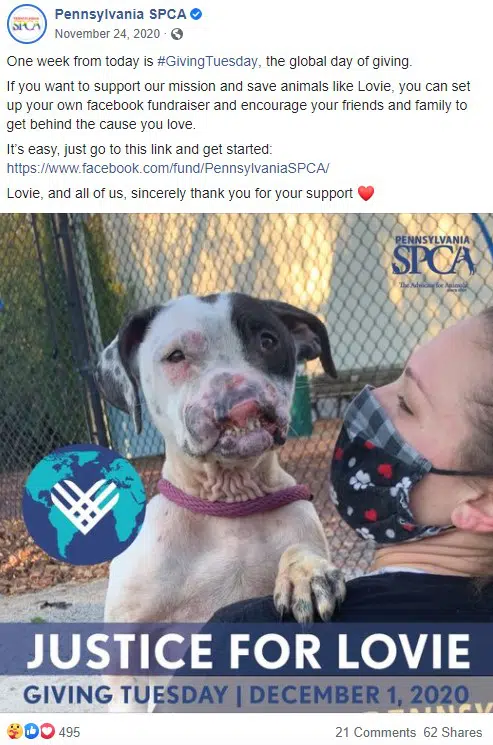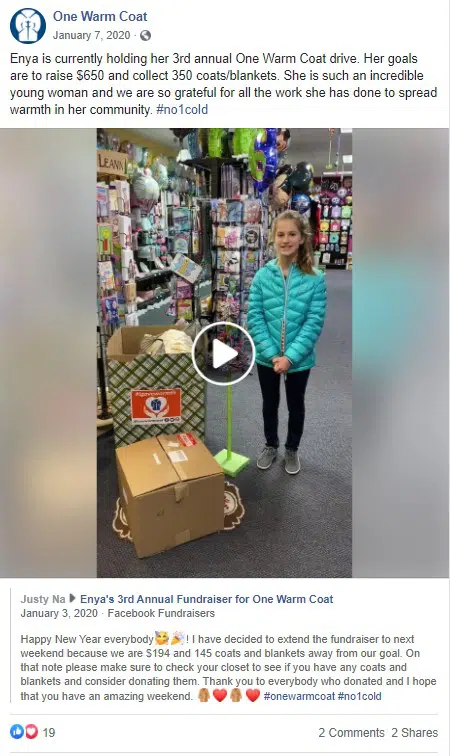Have you considered promoting your peer-to-peer fundraising efforts as part of your year-end giving campaign? It might just turn out to be your secret weapon for a successful campaign this year.
It’s no secret that peer-to-peer (P2P) fundraising campaigns are becoming more and more common every year. According to the Global Trends in Giving Report, 21% of donors create online peer-to-peer fundraising campaigns to benefit an organization. And 47% donate to crowdfunding campaigns that benefit nonprofits.
If you have a process for peer-to-peer fundraising in place at your nonprofit, the year-end season is the perfect time to whip it out and work it into your overall campaign strategy for 2021. And if you haven’t yet delved into peer-to-peer campaigns, it’s not too late for you to include them in your strategy this year, too. Check out this resource for beginners to get started on the right foot.
Peer-to-Peer Fundraising at the End of the Year
Giving Tuesday and the time leading up to the holidays and new year are popular peer-to-peer fundraising times. Supporters can fundraise around the holidays to share causes that they care about with their loved ones and get everyone in the spirit of giving back during this special and reflective time of the year.
And for an organization, peer-to-peer fundraising campaigns work to leverage social media, expand your network of supporters and incorporate social proof to boost results within your overall year-end giving campaign.
The process
The peer-to-peer fundraising process is not as simple as working the call to action into your marketing campaign. In order to be successful, your organization should have resources, tried-and-true tools and a communication plan at the ready before bringing new fundraisers into the fold.
The ideal peer-to-peer fundraising process should include a user-friendly fundraising tool, a kit or resources that include all a supporter will need to create and run their campaign (including example content and a promotion plan!), and a support person on your team to answer questions and provide encouragement along the way.
Retention
There are 2 sides to retention for P2P — retaining the fundraisers themselves and having a plan to retain new donors that come in through P2P campaigns.
Without a solid and supporter-focused process in place, your fundraisers may not be too eager to run another campaign. And these folks are likely some of your most valuable supporters, bringing new donors into the mix and spreading awareness throughout their personal networks. Build a strategy to keep them happy and coming back. Who knows — peer-to-peer fundraising may just become their new holiday tradition!
And for new donors (who are also likely to be new to your organization), it’s ideal to have a cultivation plan in place, like enrolling folks in an automated welcome series, to ensure that your newly expanded network continues on in the future.
Promoting P2P in Your Year-End Giving Campaign
Now that we’ve decided it’s a good fit for your year-end giving campaign, the fun can begin! Let’s walk through a few ways to include calls for fundraisers in your campaign this year.
Pinpoint star supporters
I typically recommend starting with a core group of supporters to reach out to individually. These are the folks who have run successful campaigns for you in the past, who have active social media followings and who aren’t hesitant to talk about your work and their connection to your mission. You may even be able to entice a board member or two to get involved.
Reach out to this group first and work with them to get a few peer-to-peer campaigns up and running before promoting these campaigns to your whole list. They’ll make for excellent examples and allow less-seasoned supporters to draw inspiration (and social proof!) from their campaigns.
Promote alongside year-end fundraising content
Take a fresh look at your strategy for this year’s campaign to find ways to promote this additional call to action. It could mean:
- A new section on the year-end giving campaign landing page on your website (or a new Fundraising page altogether)
- Calls to action on other relevant pages throughout your site
- An additional email (or two) to previous and potential donors
- Extra social media posts to promote peer-to-peer campaigns
- A targeted pop-up on relevant pages
Make sure that supporters who are likely to participate know about its importance to your campaign and have ready access to the resources they need to get started.
Nonprofit Example
The Pennsylvania Society for the Prevention of Cruelty to Animals (SPCA) has a dedicated Fundraise for Us page on their site that they can use to promote P2P fundraisers to their supporters as part of their fundraising campaigns. They also promote fundraisers on Facebook, like in this post to encourage P2P campaigns around Giving Tuesday in 2020.

Call on early donors
Early donors to your year-end campaign are also great contenders for peer-to-peer fundraising. They care about your cause and have proven it with early action. Ask these folks to take the next step and bring others in their circle in as new supporters.
Update your Thanks for Donating page and follow-up emails to call out peer-to-peer fundraising options as a way to maximize their gift and share your cause with loved ones around the holidays.
Nonprofit Example
On their Thanks for Donating page, World Bicycle Relief includes an eye-catching call to fundraise to encourage donors to keep their momentum going after making a gift.

Focus on social media
Social media is the meat and potatoes of peer-to-peer fundraising. It’s where your supporters go to promote their personal campaigns, and it’s also where you can go to reach new fundraisers.
Aside from posts to let your current followers know about the need for fundraisers, keep an eye out for mentions of your organization, cause or related topics and join the conversation with a way to spread the word and support. Follow hashtags that mean something to your organization and chime in when it makes sense to do so. You may even be able to snag a testimonial or two to use in your promotions.
Facebook also makes it easy for organizations to comment on fundraisers that are being held on their behalf. It’s a great practice to comment with a message of thanks and encouragement.
Nonprofit Example
Check out this example of One Warm Coat cheering on a young fundraiser. Social media is a great opportunity to share current and past campaigns with your audience to entice new participants. Others have done it — they can, too.

However you decide to promote your peer-to-peer fundraising efforts this year-end, there’s no denying the potential that these campaigns have to elevate your overall strategy, bring in new supporters and help you reach your fundraising goals. So have some fun with it!
Are you making peer-to-peer fundraising part of your year-end campaign? How are you planning to promote these campaigns to your audience? Let’s talk strategy in the comments.

Comments